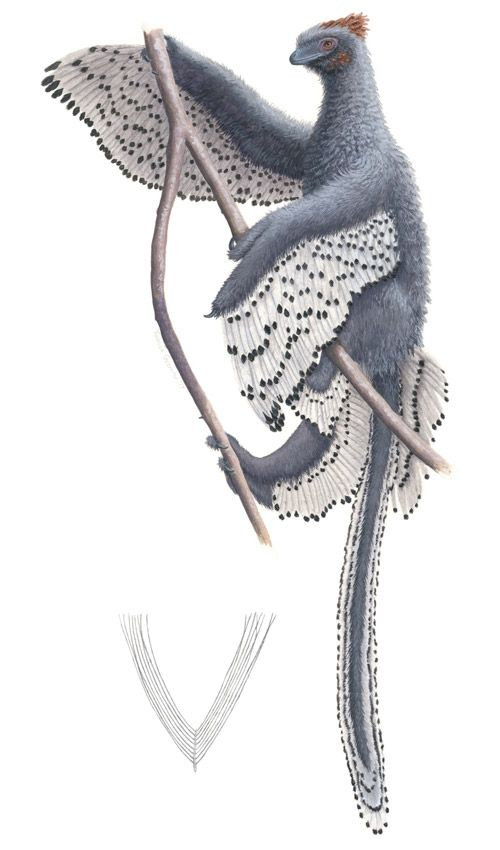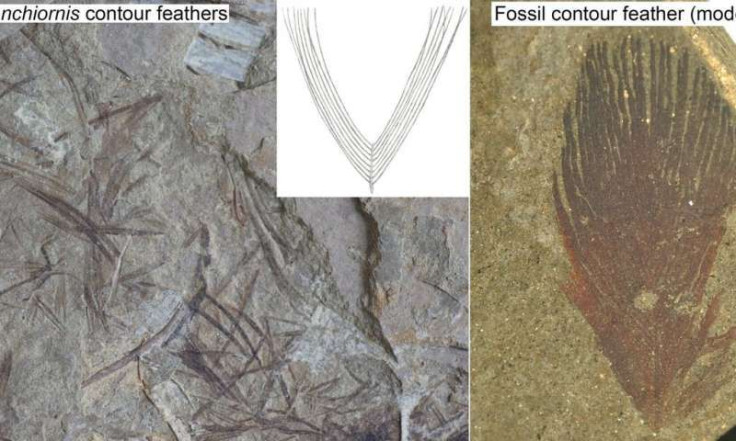Meet The 'Fluffy' Four-Winged Dinosaur: Study Finds New Feather Variety

A team of researchers from the University of Bristol has published a study that will change your opinion about dinosaurs. The study — an in-depth and the most comprehensive look till-date of the Anchiornis species — has revealed new details about dinosaur feathers.
We have known for a while about the fact that dinosaurs had feathers and that birds evolved from them. But, a revised look at a dinosaurs appearance has revealed that a particular dinosaur genus was much “fluffier” than we previously thought.
Analysis of dinosaur fossils showed the team that the genus Anchiornis had much fluffier appearance than their counterparts. In fact, they were found to be much fuzzier and softer than modern day birds. This small dinosaur was about the size of a crow and belonged to the group known as paravians, which includes other small dinosaurs such as Velociraptors.

The team compared the feather pattern and structure of an exceptionally-preserved fossil of the dinosaur to other feathered dinosaur fossils and extinct bird fossils.
The team was able to study a new type of contour feather that no-other creature has been documented to possess. On observing the extinct, primitive feather — that gave the dinosaur it’s chick like appearance — the team found that it had a short quill with long, independent, flexible barbs erupting from the quill at low angles to form two vanes and a forked feather shape.
Modern day birds have very tightly “zipped” vanes that form a continuous surface which is streamlined and flight-ready. On the other hand, the dinosaur had unzipped feathers which, the team says, might have affected the animal’s ability to control its temperature and repel water.
The study also added that these feathers would have given the small dinosaur a larger surface area that could have aided gliding.
However, the lack of a streamlined surface or body shape made the dinosaur very non-aerodynamic compared to modern birds. Anchiornis and other dinosaurs of this genus had four wings, with long feathers on the legs in addition to the arms, as well as elongated feathers forming a fringe around the tail.
The team were able to determine that Anchiornis was flightless as it would not have been able to generate the sufficient lift.
Previous knowledge and old fossils were used to create an accurate artistic depiction of Anchiornis which was done by illustrator Rebecca Gelernter along with Evan Saitta and Jakob Vinther, from the University of Bristol’s School of Earth Sciencesand School of Biological Sciences.
The color palate and the pattern found on the dinosaur were found using fossilised pigment studies.
“Most provocatively, Anchiornis is presented in this artwork climbing in the manner of hoatzin chicks, the only living bird whose juveniles retain a relic of their dinosaurian past, a functional claw,” said Evan Saitta in a news release on University of Bristol website.
“This contrasts much previous art that places paravians perched on top of branches like modern birds. However, such perching is unlikely given the lack of a reversed toe as in modern perching birds and climbing is consistent with the well-developed arms and claws in paravians,” Saitta added.
“Overall, our study provides some new insight into the appearance of dinosaurs, their behavior and physiology, and the evolution of feathers, birds, and powered flight,” said Saitta.
“It’s really exciting to be able to work with the scientists at the forefront of these discoveries, and to show others what we believe these fluffy, toothy almost-birds looked like as they went about their Jurassic business.”
The study was published in journal Paleantology.
© Copyright IBTimes 2024. All rights reserved.





















